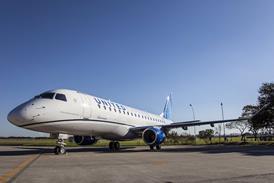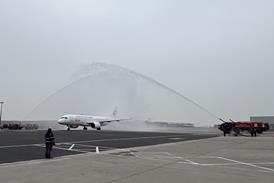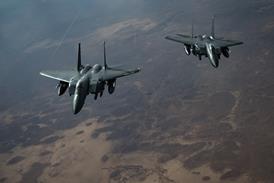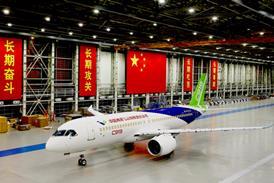In our 20 December 1957 issue, Flight published the first Caravelle “flight-test” report, by Italian contributor Vico Rosaspesa. Here are some highlights from the article:
To get the Caravelle moving in order to taxi out it is necessary to use the two Rolls-Royce Avon A.29s at about 60 per cent power; they are first opened up to 5,000rpm., and the correct taxiing speed can thereafter be maintained with about 4,500rpm. Directional control is by the steerable nosewheel, making use of brakes unnecessary; owing to the fact that the engines lie so close to the fuselage centre-line asymmetric power is not practicable for steering purposes. Rudder control becomes effective at 75-80kt. Full take-off power – 10,500lb thrust at 8,160 r.p.m. – can be held on the brakes.

For take-off the best flap setting is 10°. With the Caravelle at a gross weight of 90,400lb, the nosewheel is brought off at about 7kt below unsticking speed, which is 120kt. Longitudinal stability, both during and after take-off, seemed good.
From “brakes off” the full-weight take-off run lasts approximately 30s at an ambient temperature of about 20° C, and the undercarriage and flaps can be brought fully up some 20s after leaving the runway. Optimum climbing speed – 255kt – is attained in 55s.
A typical let-down from 38,000ft to 5,000ft is made without airbrakes at a constant 216kt in 36 min, covering 150 miles and using 660lb of fuel.
During the approach and landing one finds that flap and undercarriage extension cause negligible trim changes, and the airbrakes remain very effective. The normal approach is made with power at 1.5VSL (135kt). Small power-variations produce only small results, but a strongish ground effect in calm conditions distinctly assists the pilot in rounding out. With the tail braking parachute the landing run can be limited to 1,800ft; without it, at a weight of 86,000lb and in standard atmosphere, the ground run is 2,160ft.

Source: Flight International


























